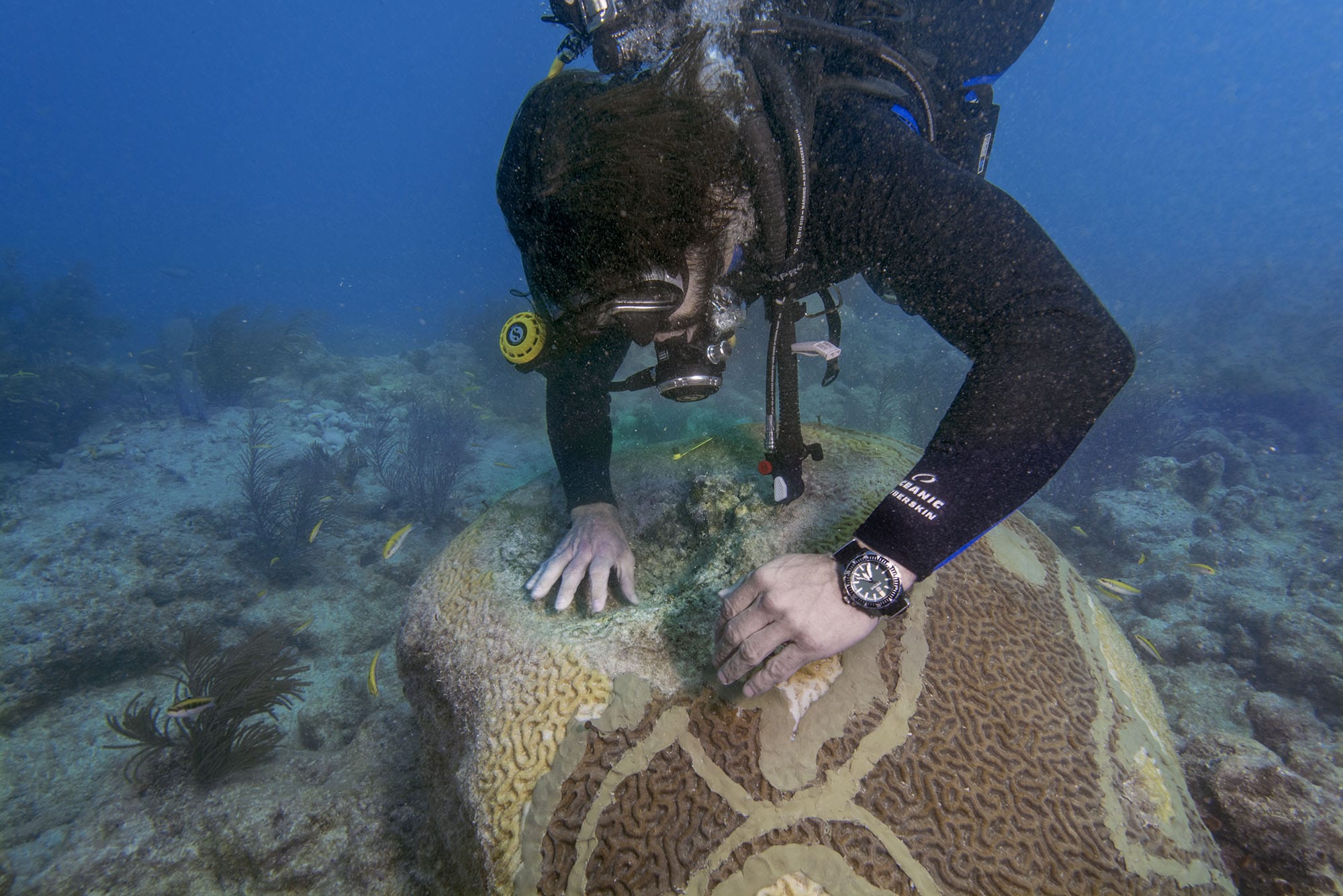|
|
Once people learn about coral reefs, coral bleaching, and NOAA Coral Reef Watch's (CRW) satellite-based monitoring products for coral bleaching heat stress, they commonly ask questions like: Is there any way to stop coral bleaching from happening? If coral reef managers know that severe heat stress and bleaching conditions are coming, is there anything they and their partners can do to help corals survive? What can I do to help protect corals during a bleaching event? In 2006, NOAA, Australia's Great Barrier Reef Marine Park Authority (GBRMPA), and the International Union for Conservation of Nature (IUCN) worked with over 50 coral reef experts from 30 organizations to publish a handbook called A Reef Manager's Guide to Coral Bleaching. The guide offers practical advice to help local and regional managers lessen the impacts of severe heat stress and bleaching to coral reef ecosystems. Recommended actions for coral reef managers and their stakeholder networks to take include:
Since 2006, multiple, additional resources have been published to help educate the public about global climate change and more localized threats to coral reefs (such as unsustainable fishing practices and land-based sources of pollution), and to help guide resource managers' and the public's actions to protect coral reefs in a warming world. Below, we identify a few of those resources: NOAA's Coral Reef Conservation Program published a list of the Top 10 Things Resource Managers Can Do Before, During, and After a Bleaching Event. In December 2013, the Reef Resilience Network, an initiative led by The Nature Conservancy, released its Reef Resilience Toolkit. Created and updated by global experts in coral reefs, fisheries, and climate change, the Toolkit is an online hub for coral reef science and management strategies addressing changing climate. It features synthesized information on science and management tools and techniques, easily searchable summaries of journal articles about reef resilience science, and case studies highlighting successful management strategies. In addition, the Toolkit provides access to more than 25 interactive webinars on hot topics in coral reef management, and hosts an online, members-only discussion forum, where coral reef managers and practitioners have the opportunity to share ideas and resources, ask questions, and support each other. NOAA's National Ocean Service published the infographic 10 Ways to Protect Coral Reefs to identify direct actions the public can take to positively impact coral reef health and conservation, independent of where a person lives. On July 14, 2017, Netflix premiered the award-winning Original Documentary, Chasing Coral. Directed by Jeff Orlowski and produced by Exposure Labs, Chasing Coral is the result of more than 500 hours of underwater footage over coral reefs, volunteer submissions of coral bleaching observations from 30 countries, and additional support from more than 500 people all over the world. The film shines a light on the wonders of coral reefs, the threats they face, and the need for both conservation and action to address global climate change. NOAA CRW's satellite-based coral bleaching heat stress products (multiple of which are included in this tutorial) as well as its modeled Four-Month Coral Bleaching Outlook are featured in the film, and the NOAA CRW Federal Coordinator at the time, Dr. C. Mark Eakin, was one of the film's two Chief Scientific Advisors. During the filming of Chasing Coral, the collaborative effort 50 Reefs was established. Developed by The Ocean Agency, in partnership with the Global Change Institute at The University of Queensland and the Wildlife Conservation Society, the 50 Reefs initiative is working to identify an optimal portfolio of coral reefs worldwide for targeting conservation and protection measures. Together, these reefs have the potential of surviving global climate change impacts (such as mass coral bleaching events) to help repopulate neighboring coral reefs over time. In 2018, the 50 Reefs initiative published its initial portfolio of 50 reefs; it also identified 20 additional sites that could be ideal for targeting conservation action (Beyer et al., 2018). In November 2018, the U.S. National Academies of Sciences, Engineering, and Medicine released the study, A Research Review of Interventions to Increase the Persistence and Resilience of Coral Reefs (National Academies of Sciences, Engineering, and Medicine, 2018). This was the first report of a two-phase study evaluating the benefits and risks of implementing novel approaches (or interventions) to increase coral reef survival in deteriorating environmental conditions. The report focused on local stressor reduction and global climate change mitigation. It reviewed the state of the science of 23 known interventions (categorized into genetic and reproductive, physiological, coral population and community, and environmental interventions). For each intervention, the report identified what is known about the benefits and goals, current feasibility, potential scale, risks, limitations, and infrastructure needs. That report was followed in June 2019 by a second report, A Decision Framework for Interventions to Increase the Persistence and Resilience of Coral Reefs (National Academies of Sciences, Engineering, and Medicine, 2019) that identified a structured, 9-step adaptive management approach (a decision framework) to help resource managers assess and implement interventions that are suitable for their region and goals.
|
||||||||||||||
|
|
|||||||||||||||
